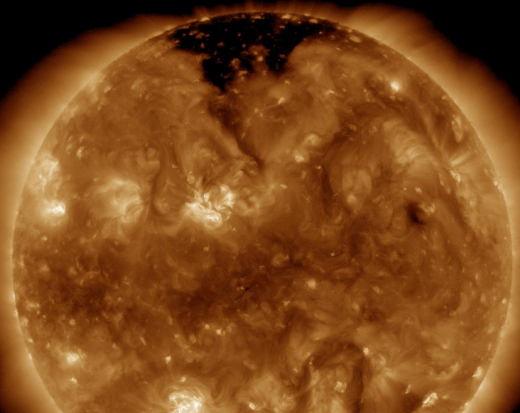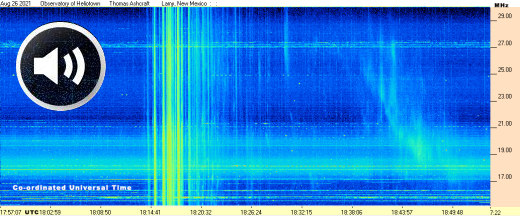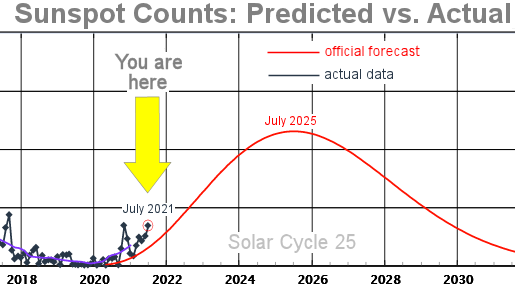Aug. 27, 2021: Sunspot AR2859 erupted on Aug. 26th, producing a C3-class solar flare: movie. The flare, however, was not the main attraction. The eruption also caused a massive “solar tsunami.” Watch the shadowy wave ripple across the sun in this false-color ultraviolet movie from NASA’s Solar Dynamics Observatory:

The expanding circular shadow is a wave of hot plasma and magnetism. Based on the time it took to reach the next sunspot, halfway around the sun, the tsunami was traveling faster than 110,000 mph.
Solar tsumanis always herald a CME, and this one was no exception. Soon after the tsunami broke, SOHO coronagraphs detected a plasma cloud leaving the sun: movie.
Update: NOAA analysts have modeled the CME’s trajectory. They predict an Earth impact during the late hours of Aug. 29th, possibly sparking G1-class geomagnetic storms through midday on Aug. 30th. Aurora alerts: SMS Text.
SOLAR RADIO BURST: When sunspot AR2659 exploded on Aug. 26th, shortwave loudspeakers on the dayside of Earth erupted with static. “It was a solar radio burst,” reports Thomas Ashcraft, who recorded the sounds from his observatory in rural New Mexico. Click to listen:

Take another look at the “solar tsunami,” above. Much of the static Ashcraft recorded is caused by that shock wave rippling through the sun’s atmosphere. Plasma waves in the ionized corona naturally emit radio noise. Ham radio operators, military radar installations, and radio astronomers have been picking up these sounds since the 1940s. You can do it yourself from your own backyard.
“As I write, the sun just produced another very strong radio burst, which really packed a punch on my spectrograph!” says Ashcraft. In other words, stay tuned for more…




